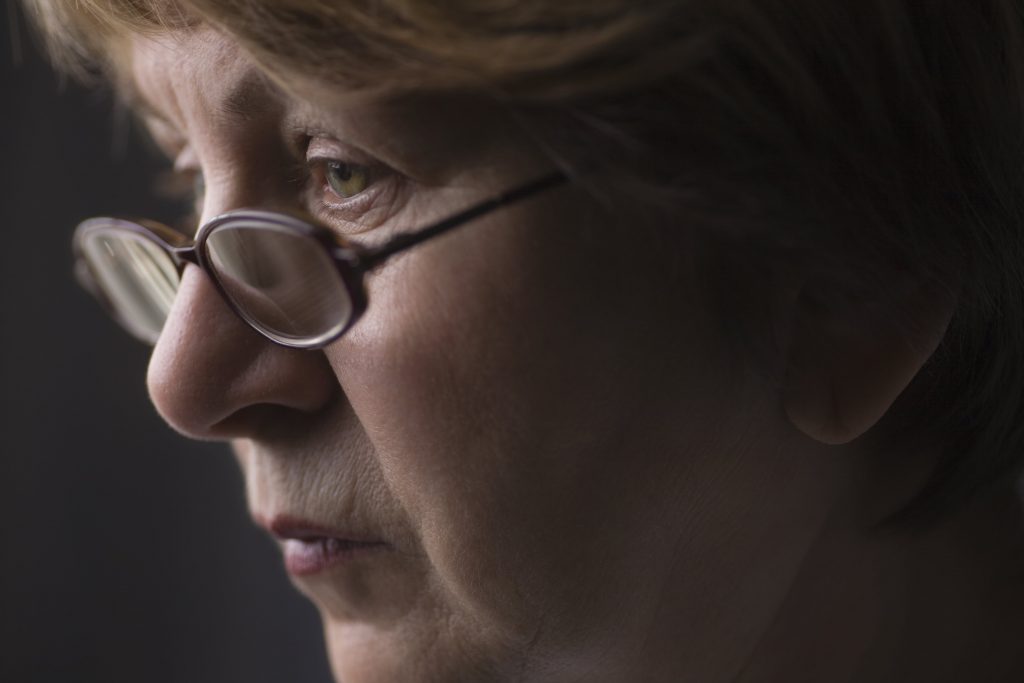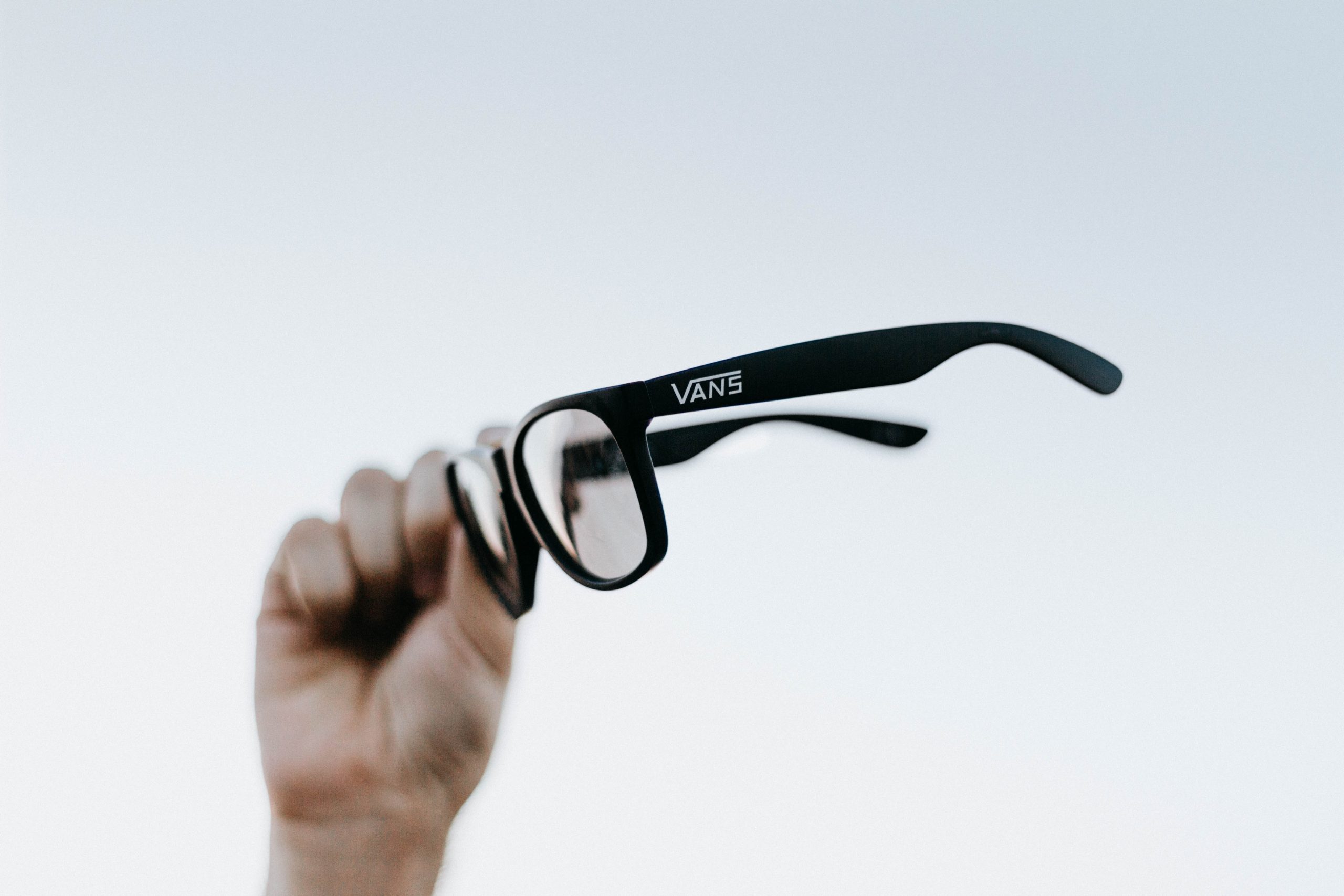How can a pair of telescopic Glasses help you?
Telescopic glasses provide the visually impaired with the ability to continue doing the things that they love like reading and driving and they allow for the most natural way of doing this compared to other low vision devices such as handheld magnifiers and handheld telescopes.
A basic aim of treatment for low vision patients is to find a way for the individual to accomplish what they desire. For patients with central vision loss, the main optical objective of low vision treatment is to enlarge the image to the point where the patient can see it.
Miniature Telescopic eyeglasses are binoculars that are placed into eyewear. For visual acuity, the system must use the patient’s eyeglass prescription as well as the highest quality optics. Telescopic lenses are available for either one eye (monocular) or two eyes (binocular). The telescope can be positioned in the glasses in a variety of ways.
Because of their reputation for producing a narrow field of view, telescopic low vision aids are sometimes misinterpreted or ridiculed. Surgeons and dentists, on the other hand, use them on a daily basis. Drivers having to see a road sign, AMD patients wanting to perceive a facial expression, and musicians needing to read music do not require a huge field of view. Anxiety and despair can be transformed into joy and independence when low vision telescopes are prescribed in the correct form for the right task and with the right patient.
Bioptic Telescopic Eyeglasses give you the benefits of a telescopic system while still allowing you to move around. The telescope is “out of the way” while the patient is moving around or doing general work since it is mounted high in the carrier lens, but it is always available for distance viewing.
What are Bioptic telescope glasses?
During activities that need both mobility and greater central vision, Bioptic Telescope eyeglasses provide the benefits of a telescopic system but still allow you to move around. The telescopic system comes in a range of sizes, shapes, colors, and magnification capabilities. They can be produced in a variety of frames to meet the demands of the patient. The patient and the eye doctor collaborate to determine the optimal system for the task and activity. Our patients have utilized their bioptic glasses for a variety of chores and activities, including driving, watching movies, attending to a play, playing cards, and simply seeing faces.
Distance vision is necessary for social engagement, and its loss may reduce one’s quality of life. The inability to interpret body language or establish eye contact may be isolating and depressing for individuals who are blind or visually impaired. Distance vision loss has a significantly greater impact on independence and self-worth more than reading loss, and it is not easily substituted by other modalities—no one can see your friends and family for you.
Patients claim they can’t see far enough away to do the job they’ve set out to do. Despite some visual quality loss, patients with 20/40 vision may typically see well enough for most activities. In fact, most states allow individuals with 20/40 acuity to drive without limits, and children with that level of acuity in the classroom have no limitations. Most patients should be pleased with the practical benefit if the bioptic telescope glasses can provide 20/40 acuity. A 2x device for someone with 20/80 acuity, 4x for 20/160, and 6x for 20/320 should suffice if the goal is 20/40.
How can Telescopic driving glasses prevent you from losing your driver’s license?
Many Americans confront the prospect of losing their driving privileges or the reality that they may never be able to obtain a driver’s license because of dealing with eyesight impairments on a daily basis. This can severely limit a person’s mobility, work opportunities, and capacity to live independently. While vision loss can generally make driving impossible, some people with mild to moderate central vision impairment but adequate peripheral vision may benefit from driving with bioptic telescope glasses.
Bioptic driving is a type of driving that combines the patient’s general vision with intermittent spotting through a small telescopic objective lens to increase the patient’s distant vision sharpness. About 95% of the time, bioptic patients drive with their own RX in the carrier lens. The patient swiftly peers through the bioptic telescope to offer details such as street signs, traffic lights, and far-off objects when utilizing it. The brief use of the bioptic telescope glasses is similar to the fast glance back in the rearview mirror that all drivers do. Bioptic driving necessitates careful alignment of the components.
Does driving with bioptic telescopes raise legal concerns?
Each state’s motor vehicle agency has a unique set of bioptic driving rules and restrictions. A list of bioptic driving laws by state can be found here. To find out what you need to get a bioptic driver’s license in your area, talk to your low vision specialist and the DMV in your state. The licensing agency, the prescriber, and the user are the only ones who can make decisions on driving with bioptics.
What are other Telescopic Eyeglasses used for?
Telescopic low vision glasses can be focusable or fixed-focus. The fixed focused will utilize a reading cap for various working distances. Telescopic low vision aids are now the best option in situations where simply getting closer to see the object of interest is not an option.
Low-vision telescopes come in a variety of forms, including handheld, spectacle clip-on, head-mounted self-contained, full-diameter telescopes and bioptic telescopes. Almost every type comes in both Galilean and Keplerian optical designs. Handheld monoculars (or even binoculars) become a tempting choice when magnification is required more than 6 or 7x.
A handheld gadget will suffice if the telescope is only used seldom and for short activities. A head-worn device is appropriate if the activity requires the use of both hands. If the user lacks the dexterity to aim the instrument, or if the telescope will be used for extended viewing.
Full Diameter Telescope glasses (Galilean Telescopes) are used to do distance tasks while the patient remains motionless. Strolling with Full Diameter Telescope glasses is equivalent to walking while looking through a pair of binoculars. Therefore mobility is not an option. These telescopes are ideal for occupations that need the patient to remain stationary. Such as watching television, going to the theater, attending sporting events, or seeing distant stock market quotations.
The telescope is placed in the field of vision of the patient (full diameter position), inferiorly, and converged in the reading position. Above the line of sight so that the user can switch their view. From the bottom lens and the telescope (Bioptic position) to allow for mobility. For drivers who need to see signs and traffic signals, the bioptic design is suggested where legal and appropriate. In fact, depending on the job, the telescopes may be customized to fit any position and distance.
Eagle Eye Telescopic Systems were created to deliver greater optics in a more cosmetically attractive instrument to the patient. These telescope glasses are the Designs for Vision Bioptic Model II Telescope. It’s mounted in a unique ball socket housing. This allows the patient to rotate the telescope to match the optical axis of the telescope with the patient’s visual axis. This Telescopic low vision aid is ideal for patients with eccentric vision as well as those who want a more cosmetically appealing device than previously available.
Can Telescopic glasses be used for macular degeneration?
A wide range of vision-enhancing devices (low vision aids) are available to help people make the most of their remaining vision. These include telescopic and digital devices that can be held in one’s hand or attached to conventional eyeglasses (Bioptics). They can be used as virtual reality glasses, as well as very strong eyewear. Visually impaired may need special software along with their telescopic and digital gadgets. It’s doubtful that a single aid will meet all of a person’s vision requirements. While there are many low vision devices available online and in catalogs, the options can be overwhelming. The most effective strategy to maximize one’s vision and independence is to visit a low vision specialist to examine your vision and determine the suitable gadgets.
A bioptic lens system, sometimes known as bioptic telescopic glasses, is a combination of a telescope and two optical lenses. The eyeglass lenses have telescopes connected to them. Patients with macular degeneration can benefit from bioptic telescopes. Patients can see better at any distance with this low vision device. These low vision glasses are also used to watch television, recognize faces, read signs, and write on blackboards, among other things.
Low Vision Telescopes are miniaturized telescopes used over standard prescription glasses. Patients with central vision loss will benefit from these custom-made glasses (as is common with Age-Related Macular Degeneration and Stargardt).
What are full-diameter telescope glasses?
Telescopes that are positioned in the middle of the carrier eyeglasses are known as full diameter telescope glasses. This allows for task flexibility, but it is limited to persons who do not require mobility. Full-diameter telescopes are used by our patients for viewing television, seeing faces, and reading.
Patients who work with computers or read text will benefit from near position telescopic glasses (usually full diameter telescope glasses). They’re much more portable than handheld or digital magnifiers. They don’t require you to hold anything for long periods of time. Each duty has its own set of magnification, focus, field, and weight requirements. Reading, computer use, painting, stitching, and playing cards are all activities that our patients enjoy.
Low vision microscope reading glasses are also recommended for macular degeneration patients who want to improve their reading vision. The glasses will amplify the fonts, making them simpler to read for the patient.
Reading Telescope glasses are telescopic devices developed for use in the workplace and at a distance for reading. They provide a longer working distance than a comparable-powered microscope (reading lens), while yet retaining a sufficient magnification level. Students, electricians, and office professionals are just a few of the people who would benefit from such assistance.
What are Reverse Telescopic Glasses for patients with Retinitis Pigmentosa or Glaucoma?
Patients with visual field loss may benefit from reverse telescopic glasses. These little telescopes are carefully placed on top of the glasses. The patient can get better vision thanks to the telescope being mounted backward. This is made possible by minifying the patient’s remaining field of view. Looking backward through a pair of binoculars is a good analogy. The patient will be able to see a smaller but wider field of view as a result of this.
Telescope glasses in all their different forms and functions can really make a difference in a visually impaired patient’s life keeping them active and independent. Our doctors take pride in the time and quality of care they each provide to their patients. Give us a call to find the doctor closest to you.
















